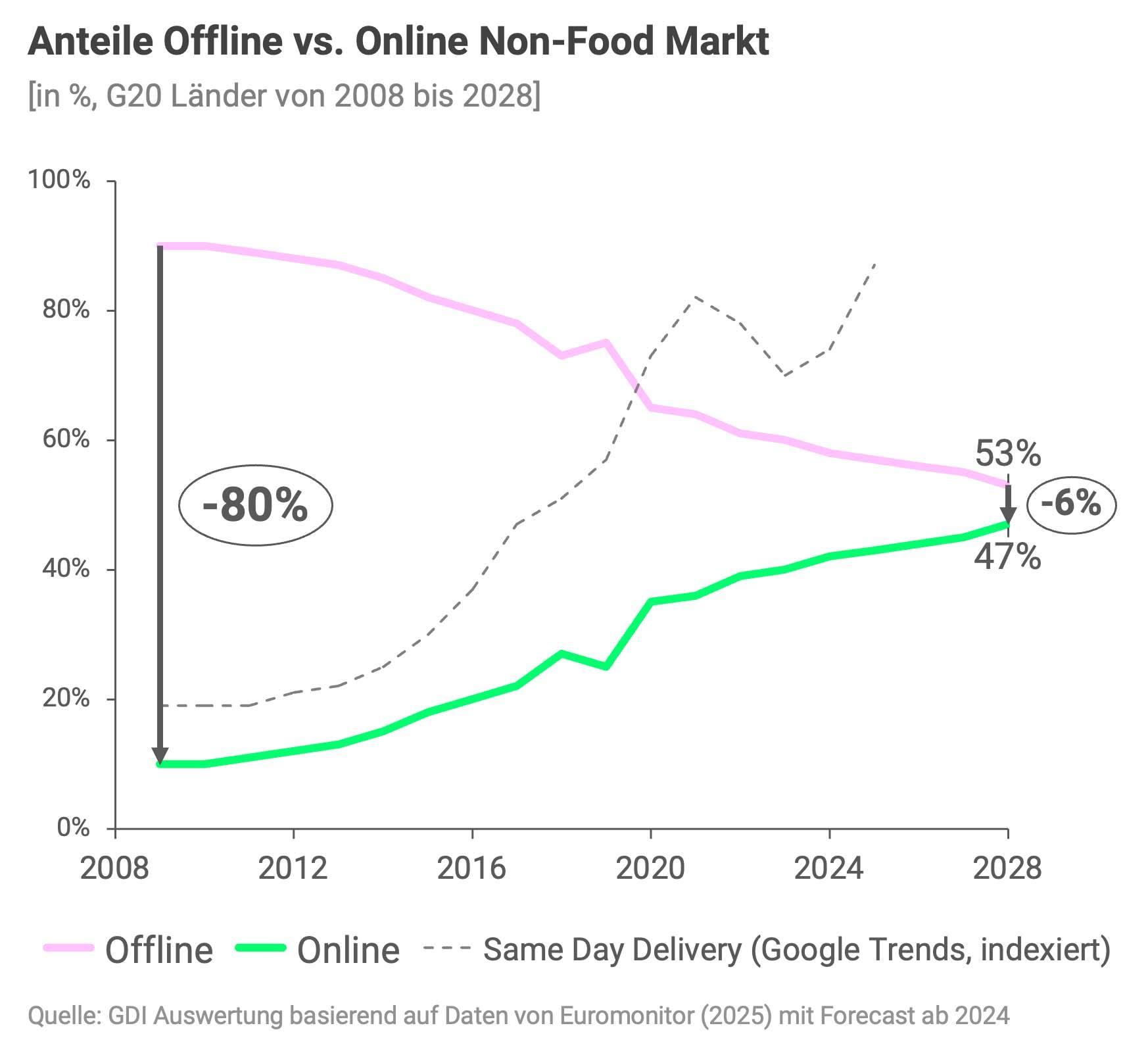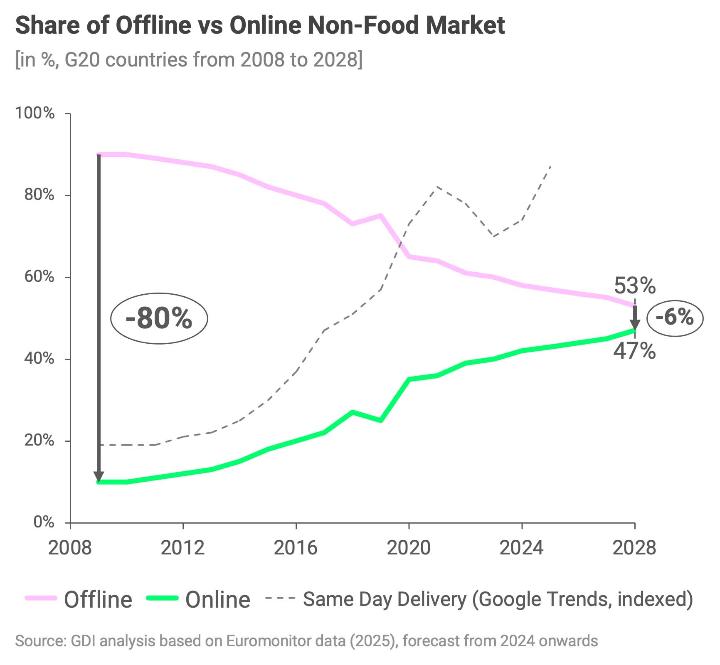The world is in a state of flux. Geopolitical conflicts are undermining security guarantees, resulting in the need for new alliances. In an economy where a lack of trust is increasingly apparent, stable relationships are a key factor. That is true in the retail sector too.

Johannes Bauer
Head of Think Tank, Member of the Executive Board
In his research, Dr Johannes C. Bauer examines changes in consumer and purchasing behaviour, the future of retail against the backdrop of long-term consumer, technology and business model trends, as well as the opportunities and risks of digitalisation for business and society.
More about the author
Three dimensions of proximity
The construal level theory says that proximity is a psychological concept influenced by various dimensions – including spatial, temporal and social ones. These three dimensions can also be applied to the retail industry – the spatial dimension represents physical proximity. This includes short distances, easy accessibility and a relevant product range. For retailers, the temporal dimension relates to online activity. This means having a strong online presence, creating a smooth and time-efficient shopping experience as well as actually fulfilling your promises (e.g. in terms of delivery). The social dimension concerns the emotional affinity that is created when customers and employees share the same fundamental values as the company, which is clearly reflected in the corporate and service culture. Retailers covering all three dimensions provide real customer benefits, optimally positioning themselves for the retail world of the future.
Physical proximity – easy access
There is a constant rise in Google searches for goods and services in the local area and nearby shopping facilities are one of the key criteria when searching for property. Although underestimated by many retailers, the data indicates that physical proximity is a major factor in customer decision-making on where to shop. The COVID-19 pandemic changed people's movement patterns forever. There has been a shift in consumer spending from the city centre to residential districts and, in turn, closer to customers. As a result, retailers such as Carrefour and Target are no longer relying solely on large-scale "big box" outlets, but are also developing a denser network of smaller stores. Having a local presence is becoming more important again.
Online proximity: where websites are ousting bricks-and-mortar retailers
A growing distance to stores is fostering the already rapid shift from high street to online retail. Higher customer expectations are met immediately online. The online share of non-food items looks set to catch up with bricks-and-mortar sales within about five years.


Traditional retailers are becoming ever more invisible on online channels. When shopping on traditional e-commerce sites, many customers only reach retailers via search engines. Only retailers who invest in digital solutions, such as SEA or SEO, and provide well-structured product information are visible. In 2022, Amazon replaced Google as the main starting point for product searches: in some countries, over 55% of shoppers begin their search directly on the Amazon platform. This trend is pushing retailers even further into the background. Competitive pricing, stock reliability and quality of service are the key success factors. In the future, AI solutions, such as ChatGPT or Perplexity, could take care of the entire purchasing process. Real-time data and citable knowledge via high-performance interfaces will play a key role then. Consumers are already using AI today to search for and compare products or to find currently applicable discount codes. Technological gatekeepers are reducing the influence of retailers in the online world. Algorithms and autonomous processes shape these customer journeys,with retailers increasingly becoming data providers and logistics companies. To remain relevant in this environment, emotional affinity must be leveraged to strengthen brand relevance.
Emotional affinity: shared values as a common foundation
Emotions are playing an ever greater role in purchasing decisions. Customers now want more than simply transactions amounting to the total value of their goods in return for their money. People are favouring retailers and brands whose image and values are aligned with their own ideals. Expectations go far beyond just customer satisfaction. Tesla is a prime example of this phenomenon. While Teslas were the most popular electric vehicles until 2024, the brand nosedived after Elon Musk decided to support Donald Trump's electoral campaign by making controversial appearances. This clearly illustrates that even very high levels of customer satisfaction are not enough to make up for incompatible values. Investing in close customer relationships also reaps rewards in economic terms. When people feel a strong affinity with a particular company, they are more loyal, but also shop there more often and generate higher sales.
Priorities for the retailers of the future
Three key management priorities have emerged too:
- Retailers need to review their product portfolio and store format strategies. The changing needs of new customer groups and trends must be taken into account.
- Retailers must ensure a strong online profile, relevance and citability to future-proof themselves for agentic commerce.
- At the same time, they must align their value system with that of their target group and create strong emotional bonds as a customer-centric KPI that extends beyond just customer satisfaction alone.
Customer proximity is a multidimensional concept. It is achieved when bricks-and-mortar stores are easy to access, a strong online profile exists and where retailers are responsive and have established an emotional affinity with customers. Retailers who cover these dimensions and retain a strong profile in an AI-driven retail world will establish enduring trust and achieve long-term success.
This guest article written by Johannes Bauer was published in the 05/2025 issue of Handel Heute on pages 18 and 19.
Book a presentation on the topic of nearconomy and find out how you can gain a competitive edge through physical, online and emotional proximity. The inspirational input presentations from the GDI provide visionary insights into current trends and developments.